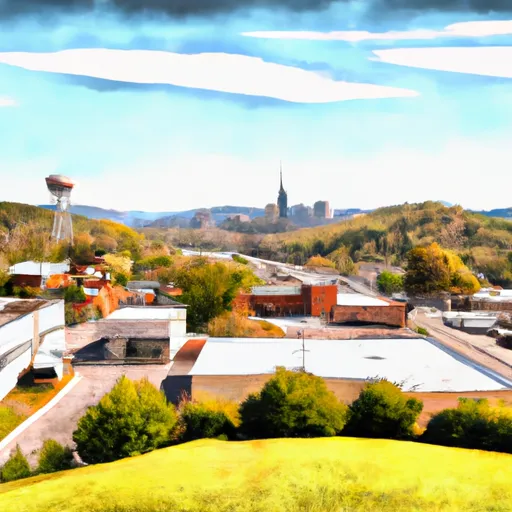-
 Snoflo Premium
Snoflo Premium
Get unlimited access to all our content
With no Ad interruptions! - Start Your Free Trial Login with existing account
Postelle
Eden Index
Climate
7.4
•
Recreation
5.9
•
Community
1.4
•
Safeguard
5.4/10

Postelle, Tennessee is a charming town located in the southeastern part of the state. The climate of Postelle is classified as humid subtropical, characterized by hot and humid summers, mild winters, and ample rainfall throughout the year. Summers are typically hot with temperatures ranging from the 80s to the 90s°F, while winters are mild with temperatures in the 40s to 50s°F.
Hydrologically, Postelle is blessed with several water bodies, including rivers, streams, and lakes. These hydrological constituents provide numerous recreational opportunities for outdoor enthusiasts. Fishing is a popular activity, with opportunities to catch various species such as bass, catfish, and crappie. Boating and kayaking are also enjoyed on the picturesque rivers and lakes, offering breathtaking views of the surrounding nature.
Additionally, Postelle boasts an array of outdoor recreation opportunities. Hiking and camping enthusiasts can explore the numerous trails and campgrounds in the nearby national forests, offering a chance to immerse in the beauty of the Appalachian Mountains. Wildlife watching, birding, and photography are popular pastimes, allowing visitors to observe the diverse flora and fauna that call this area home.
In conclusion, Postelle, Tennessee offers a pleasant climate, abundant hydrological constituents, and a myriad of outdoor recreational opportunities. Whether one seeks to fish, boat, hike, or simply enjoy the natural beauty, Postelle has something to offer for every nature lover.
What is the Eden Index?
The Snoflo Eden Index serves as a comprehensive rating system for regions, evaluating their desirability through a holistic assessment of climate health, outdoor recreation opportunities, and natural disaster risk, acknowledging the profound impact of these factors on livability and well-being.
Climate Health Indicator (CHI): 7.4
Postelle receives approximately
1501mm of rain per year,
with humidity levels near 87%
and air temperatures averaging around
14°C.
Postelle has a plant hardyness factor of
7, meaning
plants and agriculture in this region tend to thrive during the non-winter months.
By considering the ideal temperature range, reliable water supplies, clean air, and stable seasonal rain or snowpacks, the Climate Health Indicator (CHI) underscores the significance of a healthy climate as the foundation for quality living.
A healthy climate is paramount for ensuring a high quality of life and livability in a region, fostering both physical well-being and environmental harmony. This can be characterized by ideal temperatures, reliable access to water supplies, clean air, and consistent seasonal rain or snowpacks.
Weather Forecast
Streamflow Conditions
Middle Tennessee-Hiwassee
Area Rivers
Middle Tennessee-Hiwassee
Snowpack Depths
Middle Tennessee-Hiwassee
Reservoir Storage Capacity
Middle Tennessee-Hiwassee
Groundwater Levels
Recreational Opportunity Index (ROI): 5.9
The Recreational Opportunity Index (ROI) recognizes the value of outdoor recreational options, such as parks, hiking trails, camping sites, and fishing spots, while acknowledging that climate plays a pivotal role in ensuring the comfort and consistency of these experiences.
Access to outdoor recreational opportunities, encompassing activities such as parks, hiking, camping, and fishing, is crucial for overall well-being, and the climate plays a pivotal role in enabling and enhancing these experiences, ensuring that individuals can engage in nature-based activities comfortably and consistently.
Camping Areas
| Campground | Campsites | Reservations | Toilets | Showers | Elevation |
|---|---|---|---|---|---|
| Sweetwater - Allatoona Lake | None | 896 ft | |||
| Parksville | 93 | 872 ft | |||
| Big Lost Creek | 15 | 1,024 ft | |||
| Jacks River Fields | 14 | 2,865 ft | |||
| Dobbins Lakeside Military | None | 1,079 ft | |||
| Tumbling Creek | 8 | 1,505 ft | |||
| Thunder Rock | 42 | 1,140 ft | |||
| Morganton Point | 82 | 1,753 ft | |||
| Ridgeway - Carters Lake | None | 1,282 ft | |||
| Amicalola Falls State Park | None | 1,779 ft |
Nearby Ski Areas
Catastrophe Safeguard Index (CSI):
The Catastrophe Safeguard Index (CSI) recognizes that natural disaster risk, encompassing floods, fires, hurricanes, and tornadoes, can drastically affect safety and the overall appeal of an area.
The level of natural disaster risk in a region significantly affects safety and the overall livability, with climate change amplifying these risks by potentially increasing the frequency and intensity of events like floods, fires, hurricanes, and tornadoes, thereby posing substantial challenges to community resilience and well-being.
Community Resilience Indicator (CRI): 1.4
The Community Resilience Indicator (CRI) recognizes that education, healthcare, and socioeconomics are crucial to the well-being of a region. The CRI acknowledges the profound impact of these elements on residents' overall quality of life. By evaluating educational resources, healthcare accessibility, and economic inclusivity, the index captures the essential aspects that contribute to a thriving community, fostering resident satisfaction, equity, and social cohesion.

